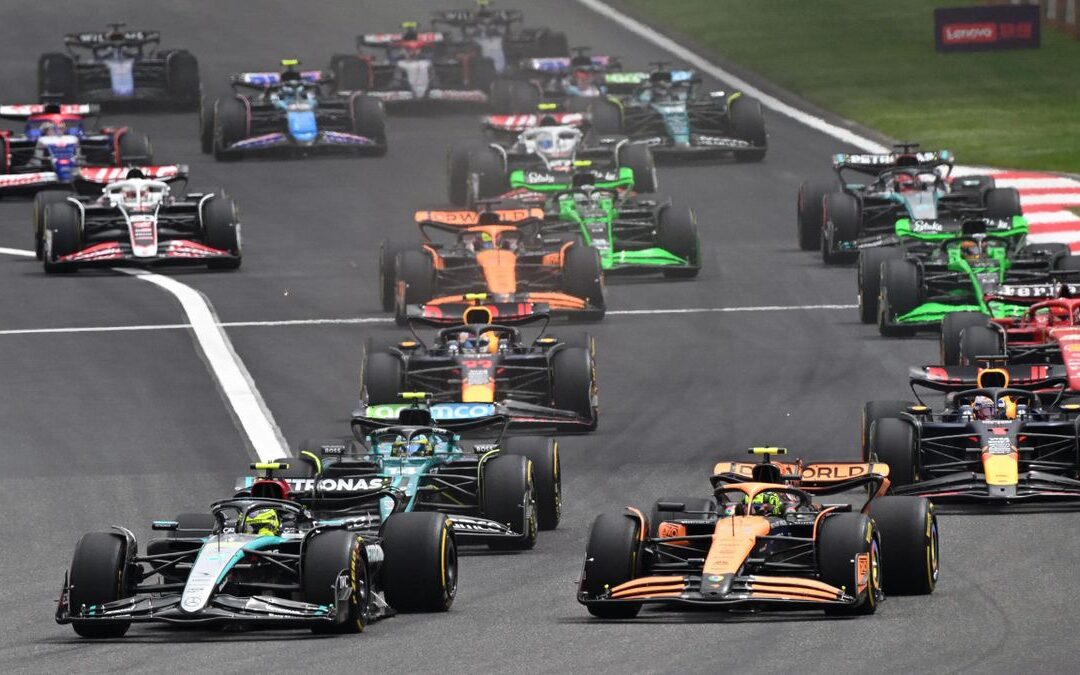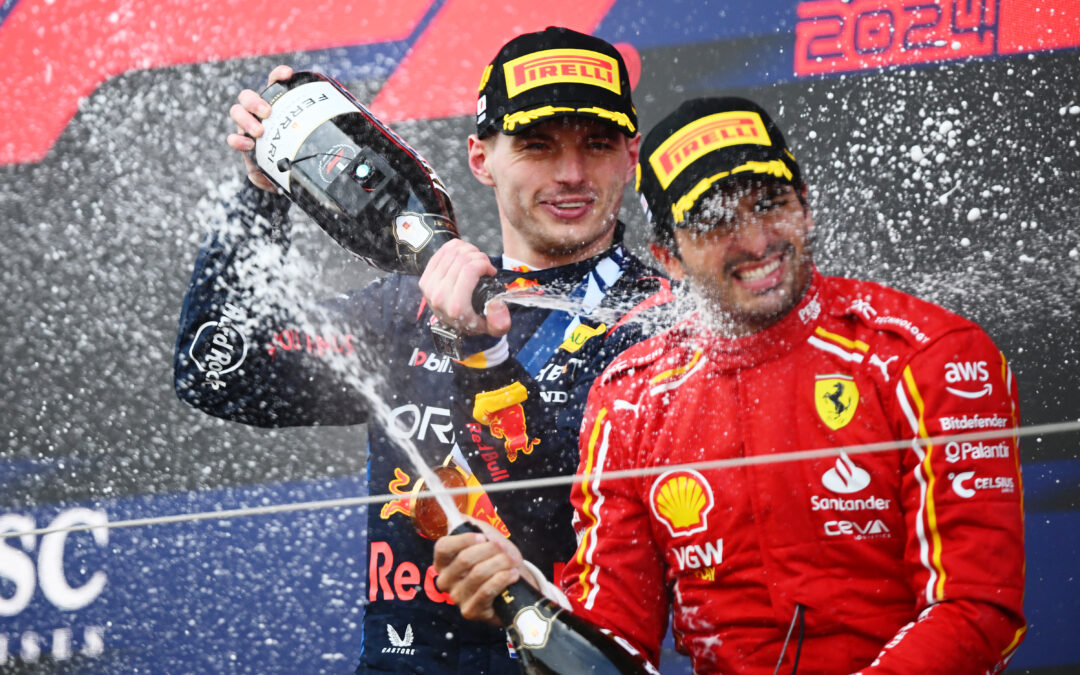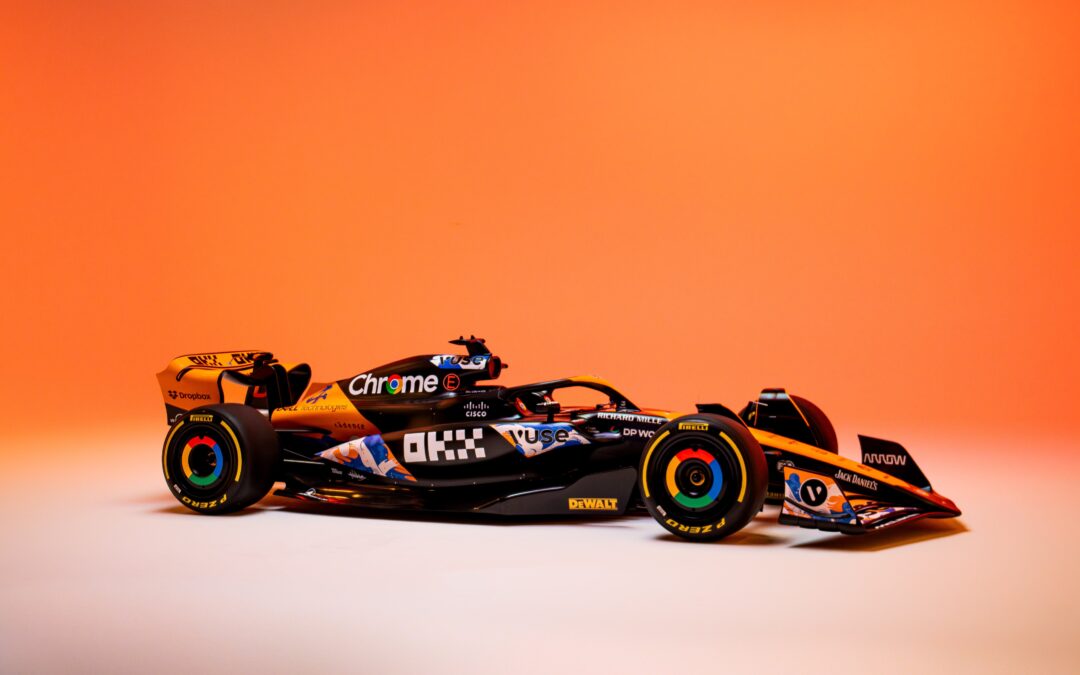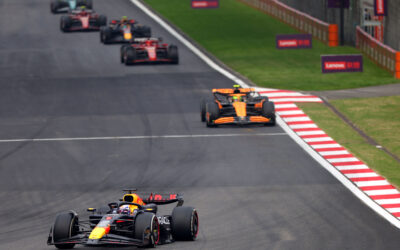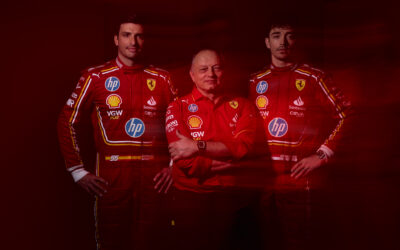Dutch GP – Race Pace Analysis FP2
After 36 years Formula 1 is back in The Netherlands for a weekend at Zandvoort – a very tricky circuit due to its narrow corners, traitorous runoffs and a banking of almost 19 degrees in Turn 3 and Turn 14.
The 4.259 km of this old-school track will prove to be especially challenging on the tyres. For this reason, this weekend Pirelli has opted for the hardest range of compounds (C1, C2 and C3), which should offer more resistance given the levels of stress the front lefts especially will be subjected to.
The air temperature today is 20°C, with the tarmac reaching only 34°C in FP2. Given the brand-new tarmac and configuration, it will be of the utmost importance for the teams to use this session to gather as much data as they can in order to perfect their setup.
The session was once again interrupted, this time by two Red Flags. The first one was caused by Hamilton pulling over for an engine failure (the second of the day after Vettel in FP1 for Mercedes Power Units), and the second by Mazepin spinning out in the T11-12 complex. Verstappen and Stroll’s qualifying simulations were therefore interrupted, right when the Red Bull driver was looking like he was about to challenge for the top spot.
Mercedes and Red Bull Racing both seemed to be holding back something in this session, not to reveal their cars ahead of Qualifying; their first sectors, the “power” sectors of the track, were rather underwhelming.
RACE PACE ANALYSIS
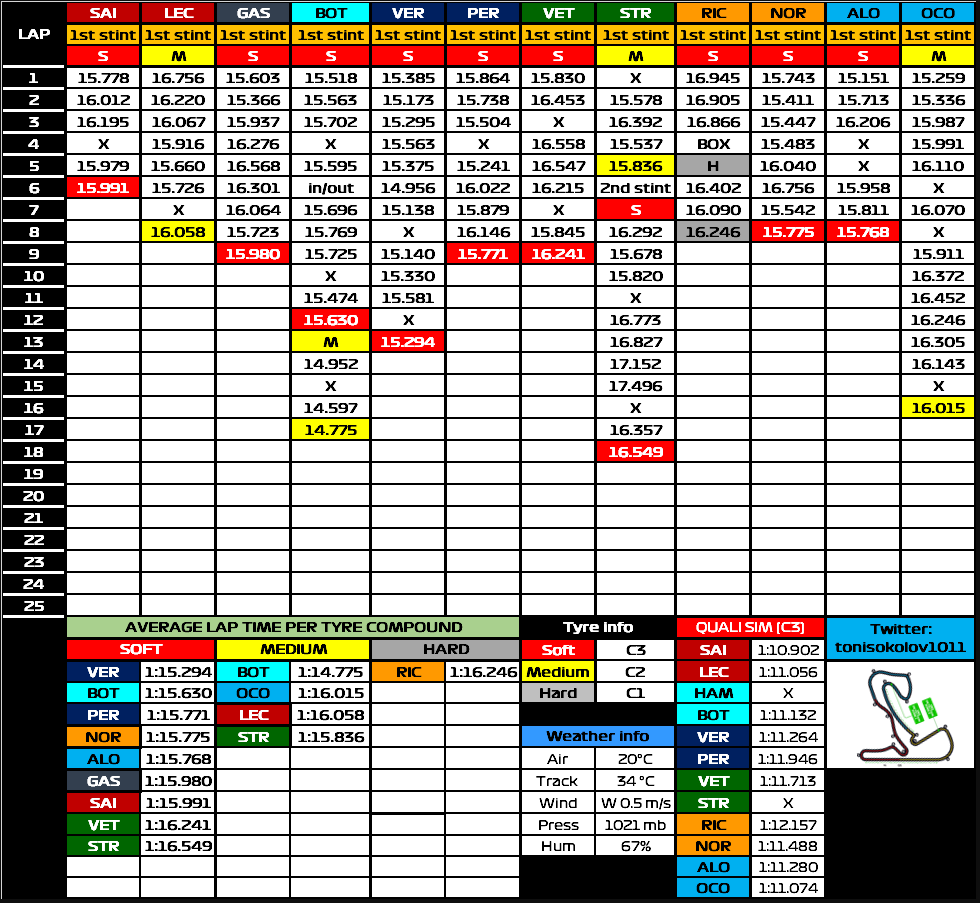
Ferrari
The team from Maranello looked very good today in Zandvoort – as to be expected due to the track having a medium-high downforce level and a lot of medium-to-slow speed corners where the SF21 seems to be at its best. Both drivers did very well in the qualifying simulation, with two laps that put them in P1 and P2 by the end of FP2.
Nevertheless, the race pace simulation was not as convincing. Although traffic certainly played a role this afternoon, and not just for the Scuderia, Sainz’s run on the soft C3 compound was not impressive. The Spanish driver was averaging a 1:15.991, which puts him behind most of the field in the pecking order. Faster than him both Red Bulls and the Mercedes of Bottas – as well as Norris’s McLaren, Alonso’s Alpine and the AlphaTauri of Gasly.
Leclerc took to the track on the medium compound, instead – averaging a traffic-affected 1:16.058, which puts him in line with Ocon’s Alpine and the Aston Martin of Stroll.
Mercedes
The team from Brackley experienced two engine failures on their Power Units today; one on Vettel’s Aston Martin in FP1, and one on Lewis Hamilton’s W12. The British Champion had to sit out FP2 after reporting a loss of power in the first five minutes of the session. This meant that Bottas had to do most of the “heavy lifting” today.
Overall, Mercedes looked very good even with just Bottas as a reference. In the race pace simulations, the team decided to take to the track on the Soft compound first, for an average of 1:15.630, which puts the Finnish driver slightly behind Verstappen, but ahead of Pérez. Mercedes was able to do a second run on Medium tyres, for an impressive average of 1:14.775 which put them on top of the charts.
Red Bull
Red Bull seems to be focused on getting back to their winning ways with Verstappen at his home Gran Prix, and once again looked very competitive in the hands of their star driver – while Pérez keeps struggling to match his teammate, especially over one lap. Their race pace simulations, however, brought them closer together.
Verstappen and Pérez both took to the track on the soft compound. Verstappen topped the charts with a very solid average of 1:15.294, even dipping into 1:14s territory when the situation with traffic cleared out. Pérez was half a second slower, but still closer than he had been in the qualifying simulations.
McLaren
McLaren is known to hide on Fridays. Today was no exception, as Norris could only reach P8 in the qualifying simulations, with Ricciardo behind in P15. The Australian driver once again appeared slower than Norris, both over one lap and in the race pace simulations.
On the Soft compound, Norris, clear of traffic, managed an impressive average of 1:15.775, while Ricciardo took to the Hard compound for three laps, averaging a 1:16.246 which looks decent in comparison to the times registered on the Medium compound.
Aston Martin
Aston Martin was back in FP2 with both cars, confirming their initial FP1 runs with decent one-lap pace again this afternoon, despite both drivers not being able to match their ideal lap times (Stroll because of a Red Flag and Vettel because of a mistake in S3).
In the race pace simulations however, the car seemed to struggle with regards to finding pace. Generally slower than the rest of the midfield, both drivers only managed an average of 1:16 on the Soft compound.
Alpine
Alpine was the team that managed to complete the most laps today. Ocon managed 15 consecutive laps on his race pace simulation on the Medium compound, for an average of 1:16.015. Alonso preferred to extend his qualifying simulation, only to switch to a fresh set of Soft tyres for his stint. The Spanish driver averaged a time of 1:15.768, which puts both Alpine cars in line with Ferrari and McLaren’s times, and ahead of the slower Aston Martin and AlphaTauri duos.
Conclusions
The weather is forecasted to remain approximately the same for the remainder of the weekend, with fairly chilly air temperatures and the occasional gust of wind. The Pit Lane limiter is set to 60 kmph, which favours a one-stop strategy for the race.
Strategy, however, will begin on Saturday, in the afternoon Qualifying session; Zandvoort does not favour overtaking, and track position will be key to getting a good result come Sunday.
FP1 Results:
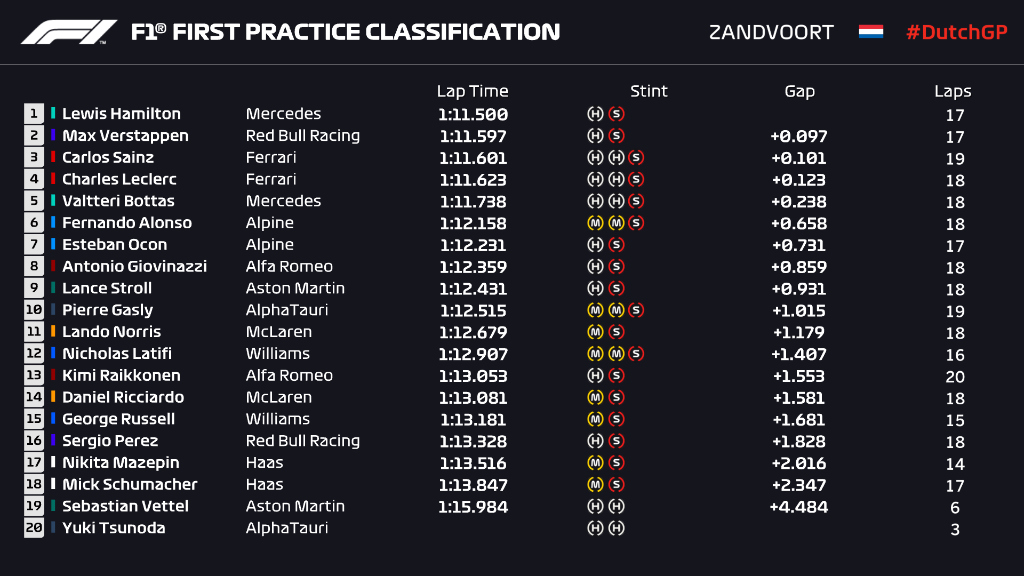
FP2 Results: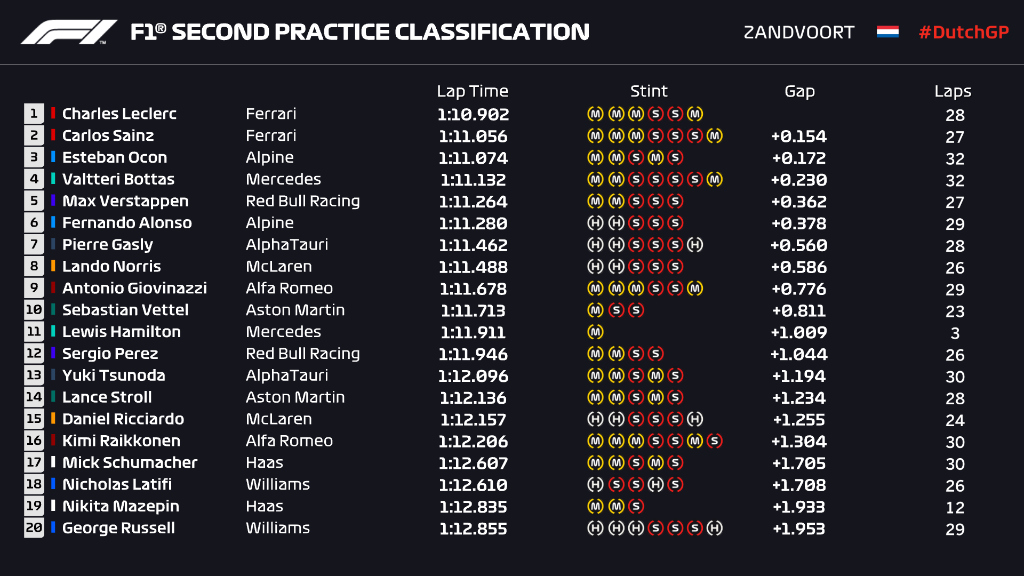
Author: Toni Sokolov
Editing: Sara Esposito



